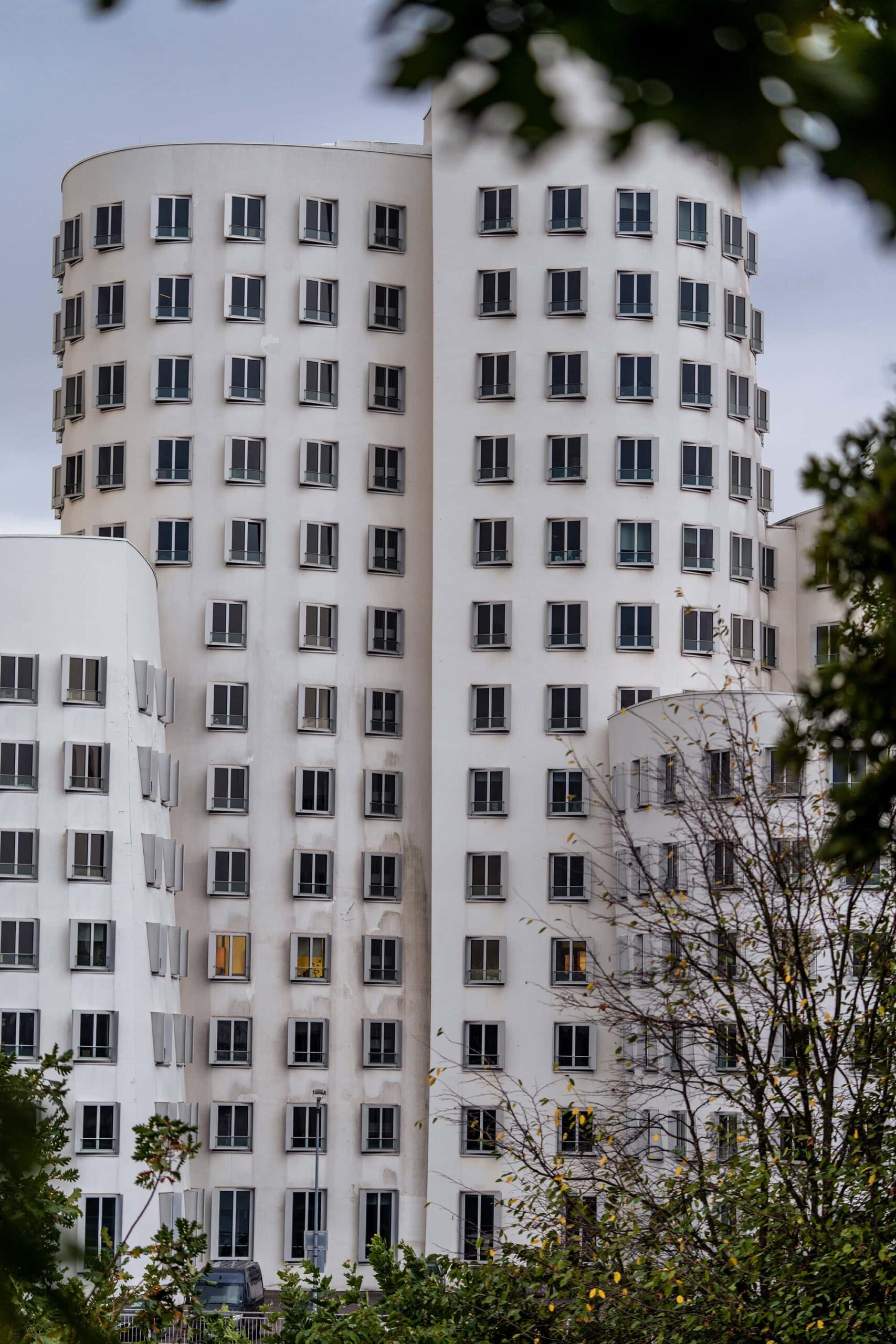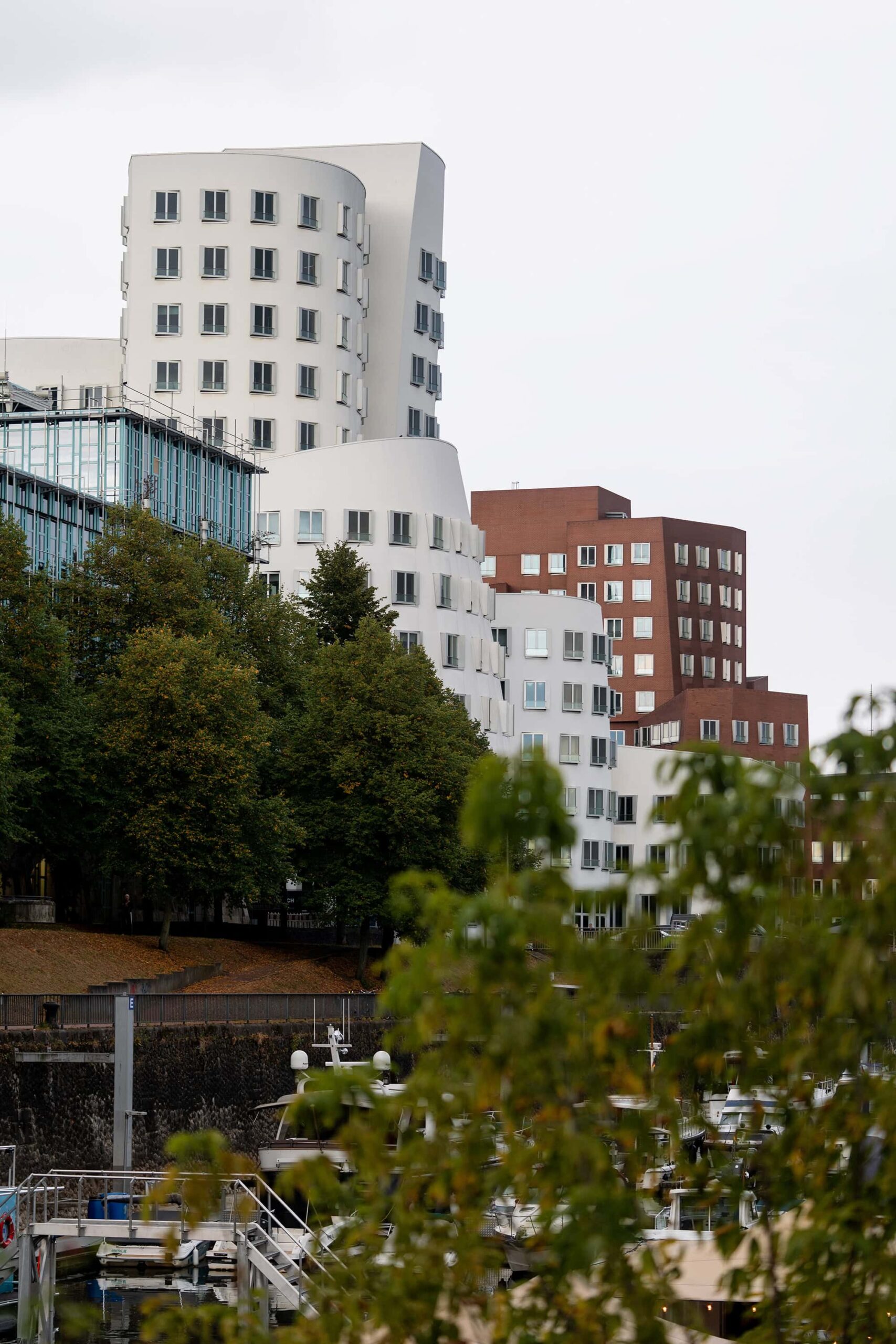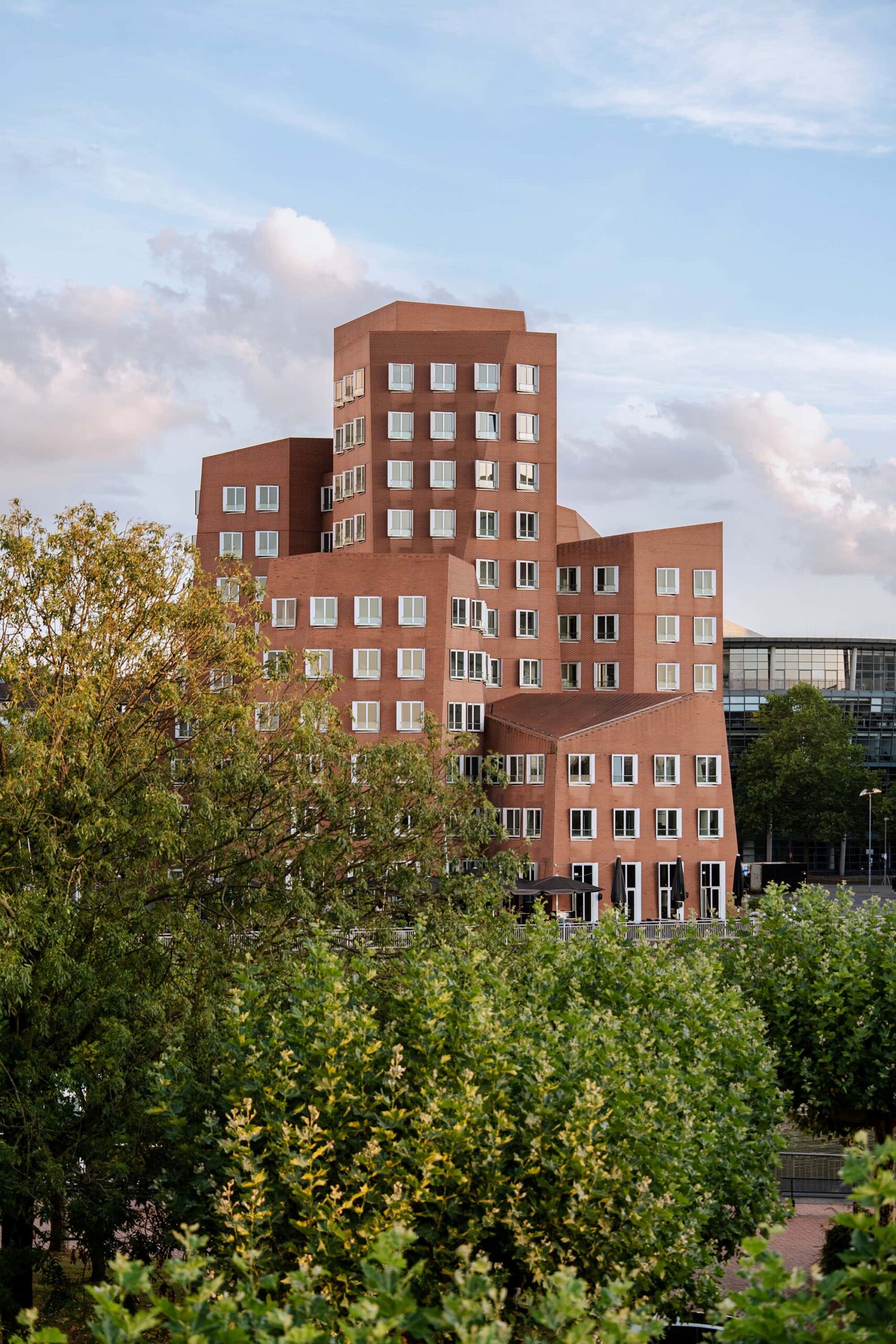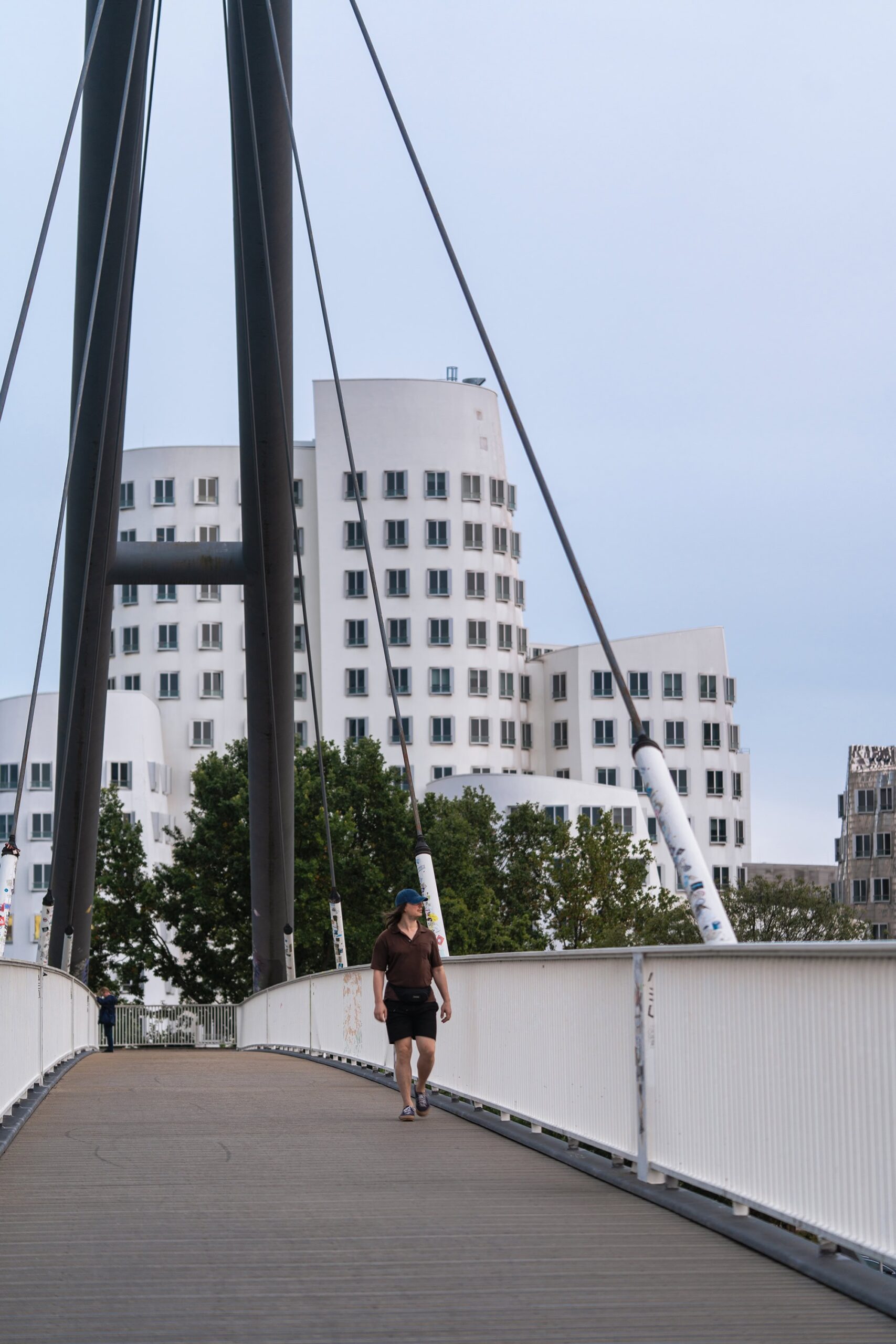Travel & Planning for New Destination Released. Free Shipping to Most Countries Around the World.
Free Shipping to Most Countries Around the World.
While planning my trip to Düsseldorf, I came across a striking photograph among the city’s attractions — buildings so unconventional that I had to find out where they were. A quick search revealed their name: Neuer Zollhof, part of Düsseldorf’s MedienHafen (Media Harbor) district.
Designed by the renowned American architect Frank O. Gehry, in collaboration with BM+P Architekten PartGmbB and Frank Gehry | Gehry Partners LLP, these structures were completed on the eve of the new millennium, in 1999. Composed of three sculptural towers, the ensemble became one of the emblematic landmarks marking the harbor’s transformation from an old customs zone into a vibrant media and cultural hub — a concrete testament to Düsseldorf’s urban metamorphosis.
Each of the three buildings possesses its own rhythm and temperament, breaking free from the constraints of traditional geometry. Their forms differ in material, height, and silhouette, while the façades play with contrast: brick, stainless steel, and gleaming white plaster coexist in dynamic tension. The irregular, curving walls twist and tilt with a distinctly deconstructivist energy. One tower, clad in polished stainless steel, mirrors the surrounding Rheinturm, sky, and harbor — a living reflection that shifts with the light, dazzling and kinetic.
Stylistically, the complex belongs to the lineage of modernism — more precisely, to postwar modernism. It draws on the spirit of the Neues Bauen (“New Building”) movement that emerged after World War II: functional, minimalist, and often prefabricated. Structural elements are accentuated — projecting forms, self‑supporting canopies, raised slabs, flat roofs, and glass curtain walls — principles applied across housing, offices, infrastructure, and industry alike.
With such bold design language, Gehry’s creation appears almost to dance along the Rhine, earning it the local nickname “the Dancing Houses.” Today, the complex continues to attract countless visitors and photographers who come to capture its play of light, form, and movement — a symbol of the city’s creative spirit on the river’s edge.








We use cookies to optimize your experience, analyze usage, and personalize content. Your continued browsing indicates consent to our cookie usage and the sharing of site interaction data with our marketing and analytics partners.